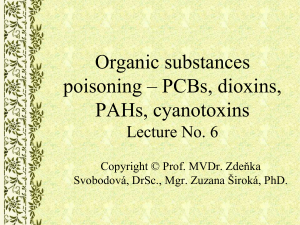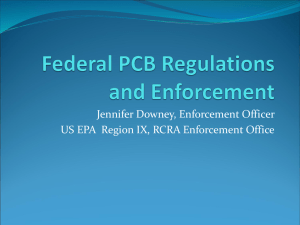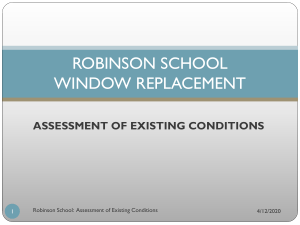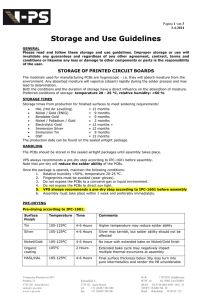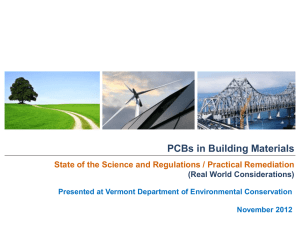National Report on Human Exposure to Environmental Chemicals
advertisement
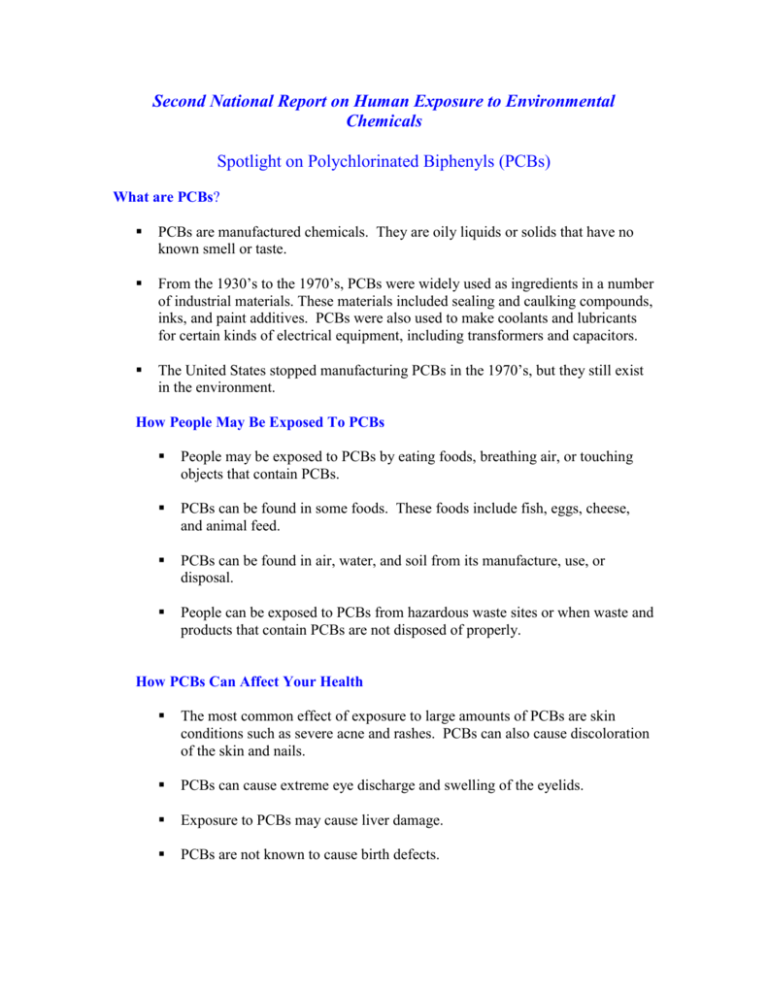
Second National Report on Human Exposure to Environmental Chemicals Spotlight on Polychlorinated Biphenyls (PCBs) What are PCBs? PCBs are manufactured chemicals. They are oily liquids or solids that have no known smell or taste. From the 1930’s to the 1970’s, PCBs were widely used as ingredients in a number of industrial materials. These materials included sealing and caulking compounds, inks, and paint additives. PCBs were also used to make coolants and lubricants for certain kinds of electrical equipment, including transformers and capacitors. The United States stopped manufacturing PCBs in the 1970’s, but they still exist in the environment. How People May Be Exposed To PCBs People may be exposed to PCBs by eating foods, breathing air, or touching objects that contain PCBs. PCBs can be found in some foods. These foods include fish, eggs, cheese, and animal feed. PCBs can be found in air, water, and soil from its manufacture, use, or disposal. People can be exposed to PCBs from hazardous waste sites or when waste and products that contain PCBs are not disposed of properly. How PCBs Can Affect Your Health The most common effect of exposure to large amounts of PCBs are skin conditions such as severe acne and rashes. PCBs can also cause discoloration of the skin and nails. PCBs can cause extreme eye discharge and swelling of the eyelids. Exposure to PCBs may cause liver damage. PCBs are not known to cause birth defects. PCBs may contribute to certain types of cancers, but more research is needed before scientists can say for sure. Over the years, many people have been exposed to PCBs; because people are different, they react differently to PCBs. Just because people have PCBs in their bodies does not mean that the PCBs will cause health problems. More research is needed to figure out if there is a link between exposure to PCBs and health problems. Many things determine whether a harmful effect will occur and how bad it will be. These factors include how the person was exposed (breathing, eating, drinking, or skin contact), how much of a PCB the person was exposed to, and how long the person was exposed. Other factors are the person’s age, sex, lifestyle, occupation, nutritional status, genetic makeup, and general health. People who have been exposed to PCBs and who are having health problems should seek medical care. In the meantime, scientists continue to do research to better understand why some people experience harmful effects while other people do not. How People Can Avoid Exposure to PCBs Avoid eating high-fat animal products such as red meat, poultry, dairy products and eggs. If you don’t want to eliminate them completely then switch to low-fat versions. Replace appliances, such as refrigerators and television sets, older than 1979. If you drink well-water, check your pump to make sure it does not contain PCB oil. Avoid eating wild fish and game. Check old fluorescent light fixtures. If the fixtures are from 1979 or older they need to be replaced. Check old products for PCBs. Old painted surfaces, old grout, old asphalt shingles, old tarpaper and old sealants may contain PCBs. If possible have them tested for PCB contamination. Reduce dust and dirt in the home. Where To Get More Information About PCBS ATSDR ToxFAQ on PCBs: http://www.atsdr.cdc.gov/tfacts17.html Chemfinder: www.chemfinder.com EPA Integrated Risk Information System (IRIS): www.epa.gov/iris/ How To Get A Copy Of The Report The Report is available on CDC’s Web page at www.cdc.gov/nceh/dls/report or you can call 1-866-670-6052 (toll free) and ask for a copy. The Centers for Disease Control and Prevention (CDC) protects people’s health and safety by preventing and controlling diseases and injuries; enhances health decisions by providing credible information on critical health issues; and promotes healthy living through strong partnerships with local, national, and international organizations.

